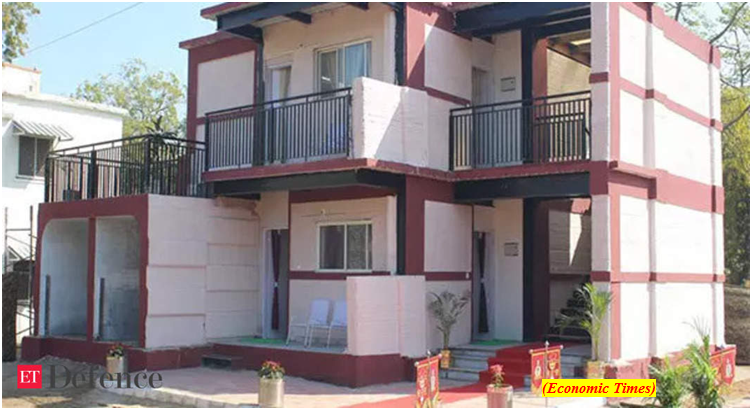NHA is launching a lightweight HMIS and inviting healthcare providers to participate in its beta testing (GS Paper 2, Health)

Why in news?
- The National Health Authority (NHA) is releasing the beta version of a lightweight, robust, and ABDM-compliant Hospital Management Information System (HMIS).
- This HMIS solution is envisioned to provide a digital platform for healthcare providers, particularly focusing on private clinics and small health facilities.

Mandate:
- NHA is the nodal agency for implementing Ayushman Bharat Digital Mission (ABDM) which aims to develop the backbone for the digital health infrastructure in India.
- In line with this vision, it is leveraging the strengths of the CoWIN module to develop a new HMIS solution.
- This will accelerate the digitization of small clinics and improve the discoverability of healthcare providers in India.
The beta version of this HMIS offers the following features:
- ABDM compliant:Allows doctors to generate and fetch ABHA (Ayushman Bharat Health Account) for their patients.
- Facility Management:Allows doctors to manage their calendar, appointments, and patient details in a single window.
- Digital Services: Allows doctors to view previous health records and prescriptions for registered patients and take video consultations.
- e-prescription Services: Generate and share digital standardized prescriptions using a range of parameters with options to modify/customize the prescription layout
Way Forward:
- Healthcare providers can now use this new solution, share their valuable feedback, and play a role in shaping India’s digital healthcare ecosystem.
- Feedback from healthcare providers will be incorporated into the ABDM-enabled software to make it more robust.
Indian Army inaugurates First ever Two Storey 3D Printed Dwelling Unit
(GS Paper 3, Defence)
Why in news?
- The Indian Army inaugurated its first 3-D Printed House Dwelling Unit (with Ground plus One configuration) for soldiers at Ahmedabad Cantt.

Details:
- The dwelling unit has been constructed by the Military Engineering Services (MES) in collaboration with MiCoB Pvt Ltd incorporating the latest 3D Rapid Construction Technology.
- Construction work of the dwelling unit measuring 71 sqm with garage space was completed in just 12 weeks by utilising the 3D printed foundation, walls and slabs.
- The disaster-resilient structures comply with Zone-3 earthquake specifications and green building norms.
Significance of 3-D printed houses:
- The 3-D printed houses are symbolic of the modern-day rapid construction efforts to cater for growing accommodation requirements of the Armed Forces personnel.
- This structure also stands testament to the commitment of Indian Army in fostering the ‘Atmanirbhar Bharat Abhiyan’.
- The technique utilises a concrete 3D printer that accepts a computerised three-dimensional design and fabricates a 3-D structure in a layer-by-layer manner by extruding a specialised type of concrete specifically designed for the purpose.
Background:
- Indian Army units have already dovetailed 3D printing technology in construction of pre-casted permanent defences and overhead protection meant for operations.
- These structures are currently being validated over a period of one year and can be seen being incorporated in all terrains, the recent being in the UT of Ladakh.
GNPA ratio falls to seven year low of 5% in Sept 2022 RBI
(GS Paper 3, Economy)
Why in news?
- Recently, the RBI released the Financial Stability Report (FSR).
- The gross non-performing assets (GNPA) ratio, which declined to a seven-year low of 5 per cent in September 2022, is expected to further improve to 4.9 per cent by September 2023, the Reserve Bank of India (RBI) said.

GNPA Ratio:
- The GNPA ratio estimate is based on the macro-stress test performed to assess the resilience of banks’ balance sheets to unforeseen shocks emanating from the macroeconomic environment.
Key Highlights:
- Under the assumption of no further regulatory reliefs as well as without taking the potential impact of stressed asset purchases by National Asset Reconstruction Company (NARCL) into account, stress tests indicate that the GNPA ratio of all banks may improve.
- However, if the macroeconomic environment worsens to a medium or severe stress scenario, the GNPA ratio may rise to 5.8 per cent and 7.8 per cent, respectively.
- The ratio of GNPA to gross advances stood at 5.9 per cent in March 2022. As of September 2022, the net non-performing assets (NNPA) ratio stood at a ten-year low of 1.3 per cent, wherein private sector banks (PVBs’) NNPA ratio was below 1 per cent.
- At the bank group level, the GNPA ratios of public sector banks (PSBs) may swell from 6.5 per cent in September 2022 to 9.4 per cent in September 2023, whereas it would go up from 3.3 per cent to 5.8 per cent for private sector banks (PVBs) and from 2.5 per cent to 4.1 per cent for foreign banks (FBs), under the severe stress scenario.
Stress test:
- The stress test results further showed that the banks are well capitalised and capable of absorbing macroeconomic shocks even in the absence of any further capital infusion by stakeholders.
- Under the baseline scenario, the aggregate Capital to Risk Weighted Assets Ratio (CRAR) of 46 major banks is projected to slip from 15.8 per cent in September 2022 to 14.9 per cent by September 2023.
- It may go down to 14 per cent in the medium stress scenario and to 13.1 per cent under the severe stress scenario by September 2023, but it stays well above the minimum capital requirement, including capital conservation buffer (CCB) requirements, which is 11.5 per cent.
Way Forward:
- Amidst global shocks and challenges, the Indian economy presents a picture of resilience.
- On the domestic front, the RBI recognises the destabilising potential of global risks, even as it draws strength from the robust macroeconomic fundamentals of the Indian economy.




